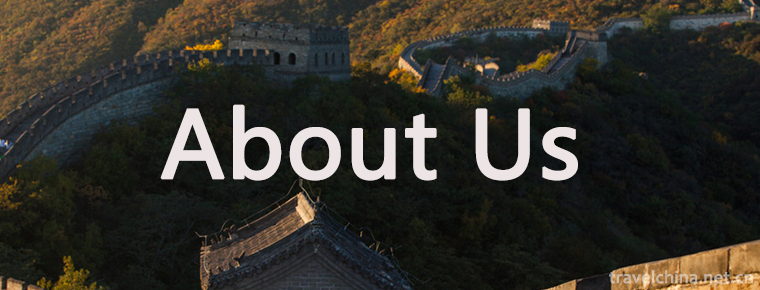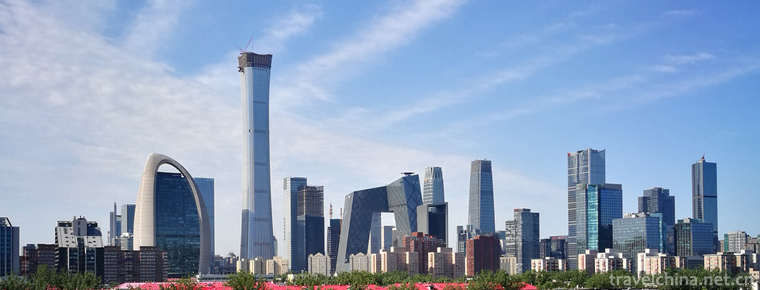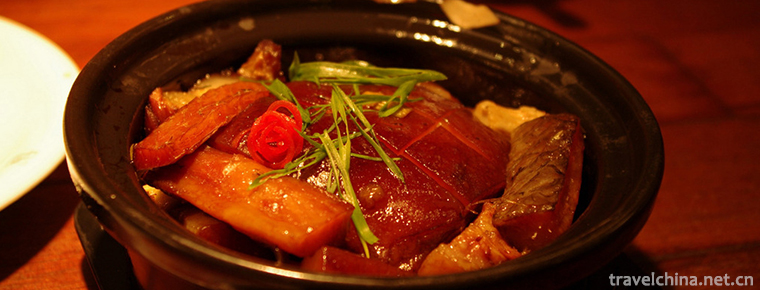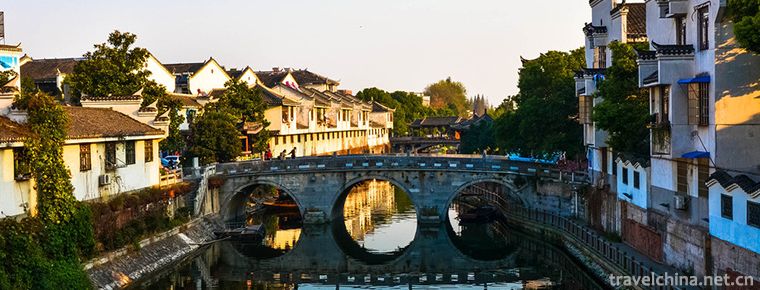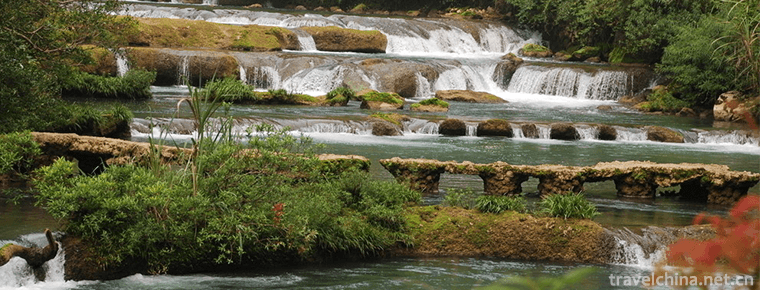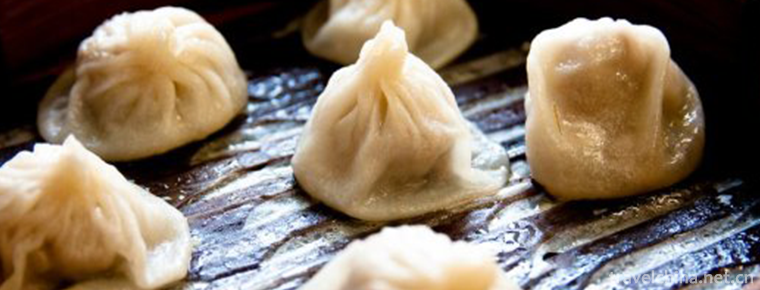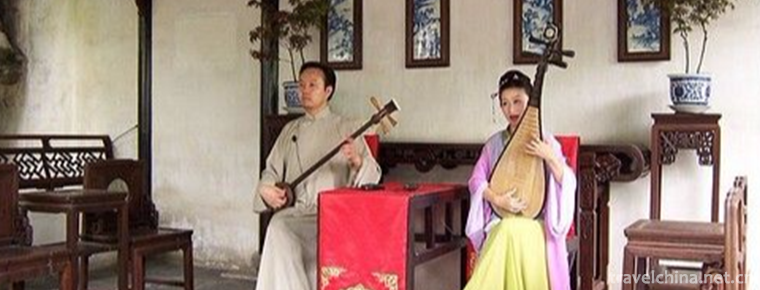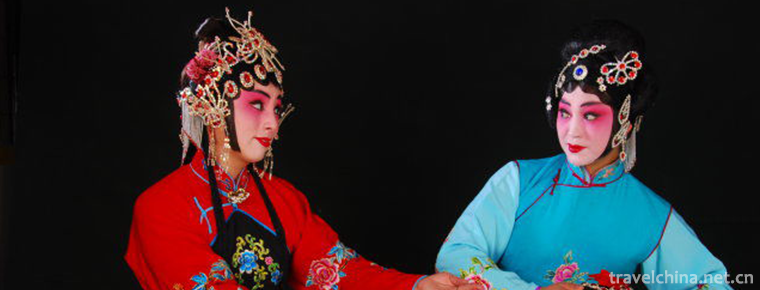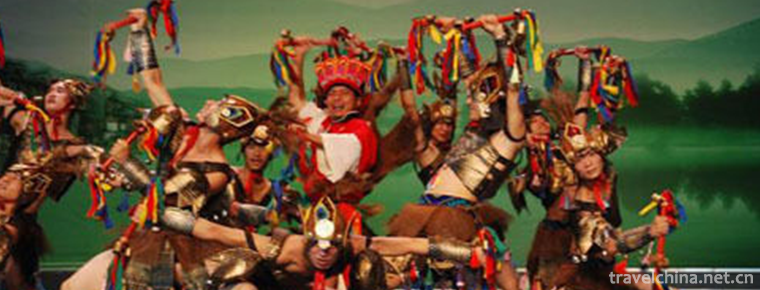Buddhist Cultural Tourist Area of Great Buddha and Zen Temple
Buddhist Cultural Tourist Area of Great Buddha and Zen Temple
As the first door to worship Mount Emei, the Buddha Zen Temple is the first stop to pray and worship in Emei, and it is also a must-go place. The Grand Buddha Temple, formerly known as the Grand Buddha Temple, is located in the eastern suburb of Emeishan City. It has convenient transportation, great momentum, meticulous construction structure, and many important halls and Zen houses.
The temples in Mount Emei are seldom commercial. Nobody goes around lobbying you to donate money, buy Incense and buy souvenirs. Visitors and pilgrims can give, perfume and worship according to their wishes without any interference, which makes people feel that this is the real return.
Emei Mountain Buddhist Chan Temple is located in the eastern suburbs of Emei Mountain. The whole temple is magnificent, magnificent and magnificent. It is not only the starting point for praying and pilgrimage to the Buddhist circles of Emei Mountain, but also the starting point for public tourists to visit Emei Mountain and enter famous mountains.
geographical environment
The Grand Buddha Chan Temple, formerly known as the Grand Buddha Temple (also known as the Grand Buddha Hall among the people), was originally located in the eastern suburbs of Emeishan City. It was founded by infinite National Teachers in the Ming Dynasty and lasted for 15 years. The monastery covers an area of more than 300 mu and has more than 140 Zen houses. Because the Great Compassion Hall in the temple presents a bronze statue of Guanyin Bodhisattva with thousand hands and thousand eyes, 12 meters high. Empress Dowager Cisheng, the mother of Emperor Wanli in Ming Dynasty, specially gives the temple the name "Great Buddha Temple".
On December 14, 2008, the Grand Buddha Chan Hall officially opened to the outside world by holding the Kaiguang Law Society and the inauguration celebration of the Grand Buddha Chan Hall in Emeishan. With an area of more than 400 mu and a building area of 56,000 square meters, the Zen Temple is the first gateway to Mount Emei and one of the largest ten-square jungles in Asia. It has become a supreme monastery that integrates cultivating monks, specializing in certification, Buddhist studies and promoting Farison.
Historical culture
During the War of Resistance Against Japan in the Republic of China (1939), in order to shelter from Japanese bombing, the National Government transported the cultural relics of the Palace Museum to Emei, kept them in the Great Buddha Temple and sent troops to guard them.
In 1958, the bronze statue of Guanyin Bodhisattva with thousands of hands and thousands of eyes was destroyed to make steel, and the temple disappeared.
On May 23, 1993, the Emeishan Municipal People's Government approved the Emeishan Buddhist Association to "restore the Great Buddhist Hall at the old site of the former Great Buddhist Hall" by document No. 64 (1993). Afterwards, because the original buildings are too dense, the demolition is very difficult, and the scale of the temple is limited, the city government approved Emei Mountain Buddhist Association in 1995 to raise funds to buy 226 mu of land in Baita Mountain in the southern suburbs of the city, and to restore and rebuild the Great Buddhist Temple. According to the cultural connotation of Puxian Daochang and the need of the development of Buddhist culture in Emeishan, Emeishan Buddhist Association, after repeated discussion and careful study, submitted to the government for approval, decided to rename the Great Buddha Temple as "Great Buddha Zen Temple".
On April 6, 1996 (Birthday of Guan Shi Yin Bodhisattva), Emei Mountain Buddhist Association held the Foundation-laying Meeting of the Great Buddha Zen Hall on Mount Baita in the south of Emei City. More than 5,000 people from Kuanming, Yongshou and Tongxiao, the relevant leaders of the provinces, Leshan and Emeishan, and the elite monks, elders and believers from all over the province and from all over the world participated in the Fair. The news of the restoration of the Grand Buddha Zen Temple, which was reported by various media, has attracted widespread attention of the society and received active support from the ten faithful. After intensive preparations, on March 19, 1998 (the birthday of Puxian Bodhisattva), the restoration project of the Grand Buddha Zen Temple was officially started. The Zen Temple was built at the "Buddha Pagoda" of the former Grand Buddha Temple, outside the moat south of Emei City.
Maintenance and protection
In the process of the restoration and construction of the Grand Buddha Zen Temple, the Emeishan Buddhist Association unified its ideas and formed a consensus: the Grand Buddha Zen Temple is a famous ten-square jungle temple in history. The restored Zen Temple must reproduce its former glory and solemnity, stand the test of history, concentrate on manpower, material resources, energy and wisdom, and build the Grand Buddha Zen Temple into a large-scale, good quality and architectural taste. Gao, Buddhist culture rich, can inherit many years of high-quality temples, making it an important part of the pilgrimage to Mount Emei.
Main attractions
The Great Buddha Zen Temple opens eastward with eleven courtyards in ten halls, orderly from east to west. The Pharmacist Hall of Daguang Building is situated in the north and south of the city. It faces the South Road of Foguang in the city. It is the entrance to the great Buddha Zen Temple. The Ming and Qing style city building is the north entrance of the Zen Temple.
The overall layout of the Grand Buddha Zen Temple is divided into three functional areas: the North (Lincheng District) is a Buddhist worship area, that is, a religious ritual space, the middle is a Buddhist garden culture sharing area, and the south is a Buddhist school education area, that is, Sichuan Buddhist College.
Pilgrimage area
The main building of the pilgrimage area is situated West to East and eleven into the courtyard. Along the central axis, it is composed of archway, Daguang Street, Shanmen, Peacock Ming King Hall, Maitreya Hall, Dizang Hall, Pharmacist Hall, Manjushu Hall, Guanyin Hall, Puxian Hall, Daxiong Palace, Tibetan Jinglou, giant wall, Guangming Mountain and so on. It is situated on eleventh-level platform, with a height difference of 33 meters, rising step by step according to the terrain, with great momentum.
Public Garden Area
The Emei Academy is mosaic in the central public garden area. Here, exotic flowers and exotic flowers, full of lush onions, with seasonal joy, the next opening; precious forests, lush growth, row after row, scattered in a delightful way; forest winding paths, smooth swimming in the meantime, relaxed and happy. There are three huge release ponds, Miaojue Lotus Pool, Isojue Lotus Pool and Yuanjue Lotus Pool, which are connected step by step and occupy more than 100 mu of land. The pool is like a mirror, the waves are bright, the flowers are red, the leaves are green, and the water lilies offer blessings, which makes people realize the philosophy of "Buddha is in the net". Walking along the levees and pools, we can get a good view of the distant mountains. In the lake and mountain reflecting pools, turtles swim in groups. The geographical space is perfectly combined, and people and nature coexist in harmony. In line with the principle of "public recognition, public participation, public achievement and public sharing", the shared garden area of the Grand Buddha Zen Temple is open to the public free of charge all the year round, becoming an ideal leisure place for the citizens, objectively playing the role of the city park.
Culture and Education Zone
In the south of the cultural and educational area, there are Sichuan Emeishan Buddhist College, Daguang Lecture Hall, Library, Pavilion, Platform, Tower, Pavilion, fresh and elegant; the mountains and rivers are set off with a unique style, which has become the center of Emeishan Buddhist education, Buddhist studies and cultivation of monks and talents. According to the Buddhist concepts of "Buddha, Dharma and Monk" and "Body, Phase and Utilization", the Buddhist Chan Temple represents the "feet" of the sages and Bodhisattvas and is the symbol of the "monks", while the "monks" are the basis of promoting Buddhist culture. Thus, the Buddhist Chan Temple is the center of training Buddhist talents.
Apart from the main halls, the library of the Buddhist Academy in the temple is rich in books and elegant in environment. There are many famous Buddhist classics in the library, and various Buddhist propaganda materials read free of charge, which are very worth visiting. Save your bags when you enter the library. Don't make any noise. Opening time: 8:00-18:00.
After the completion of all the projects of the Grand Buddha Zen Hall, it will become a more complete ten-square jungle Zen Hall, which can realize the compatibility of various functions, i.e. a thousand worlds of pure Zen, education and promotion of Fali-sheng. It will become an important platform for Emei Mountain to carry forward Buddhism, cultivate monks, study Buddhist literature, exchange with other countries and preserve, display and publicize cultural relics. With the development of Buddhist culture and tourism economy in Emei Mountain, this platform will play an increasingly important role.
Visiting information
Traffic information
The traffic of Emeishan Grand Buddha Zen Temple is relatively convenient. You can take No. 5 bus from Emei Scenic Area to Emei City, and then walk to the Grand Buddha Zen Temple for about 10 minutes.
About 15 yuan by taxi from Emei scenic spot.
Ticket information
Entrance tickets to Emei Mountain Buddha Zen Temple have been restored from 10 yuan to 58 yuan since March 2014.
Preferences will continue to be offered to the citizens in Leshan City: 1. The citizens in Leshan City will purchase tickets with their ID cards and pay 10 yuan per person; 2. The citizens in Leshan City will also be able to apply for annual cards with their ID cards for 120 yuan per year, with unlimited visits.
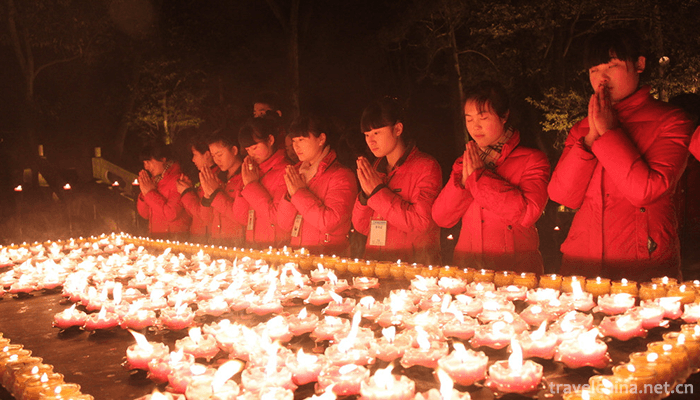
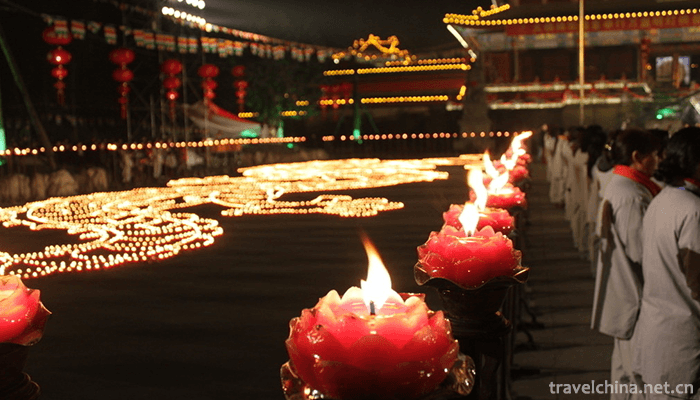
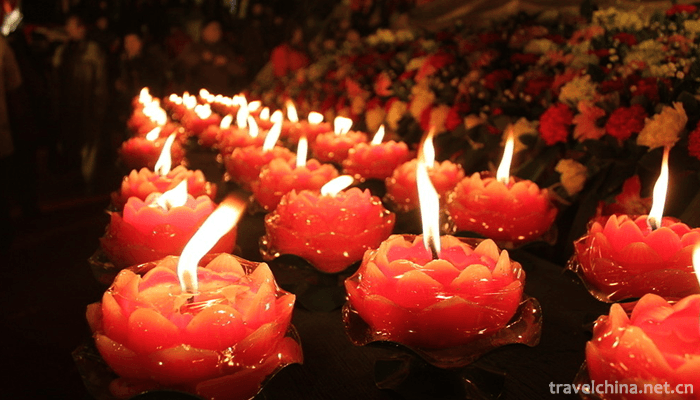

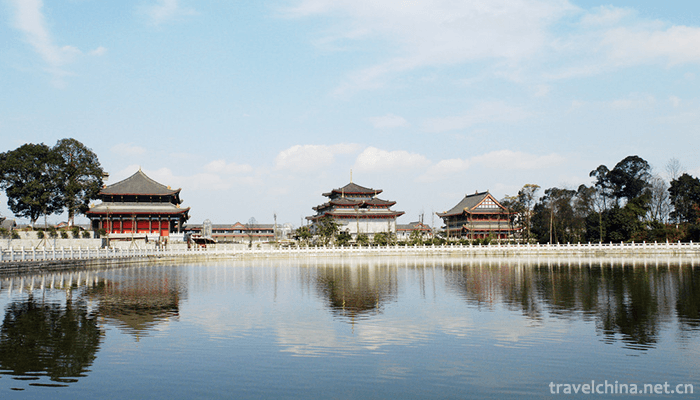
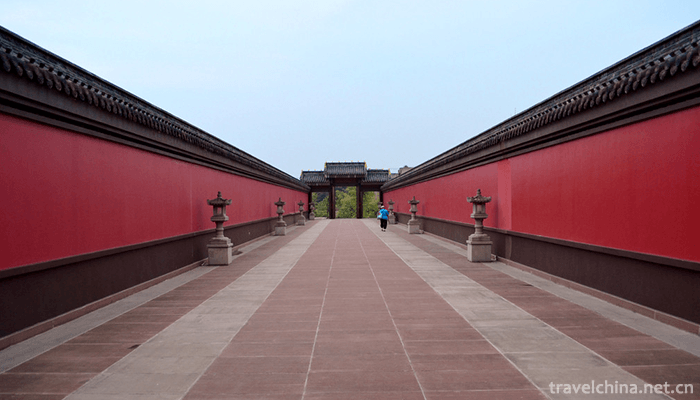


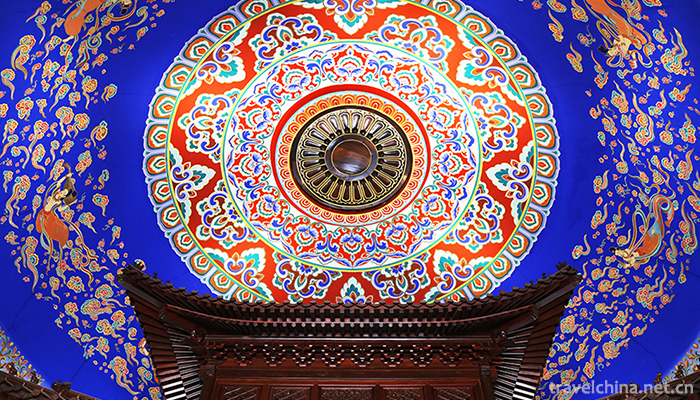
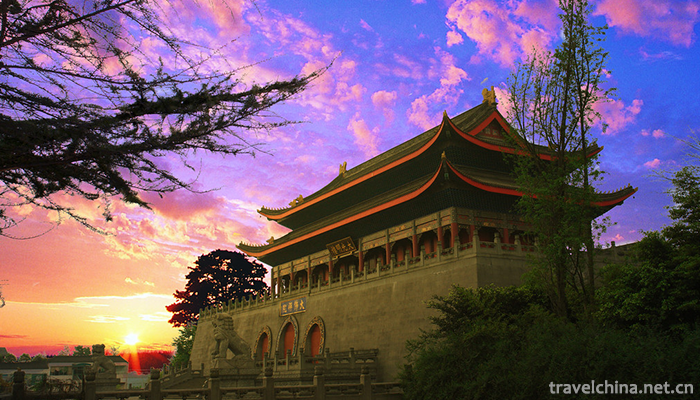

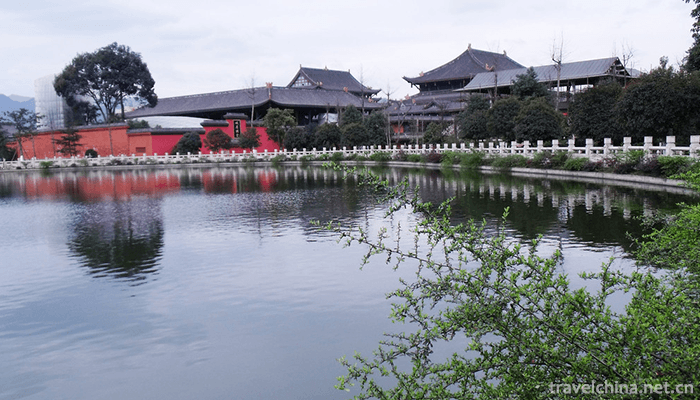
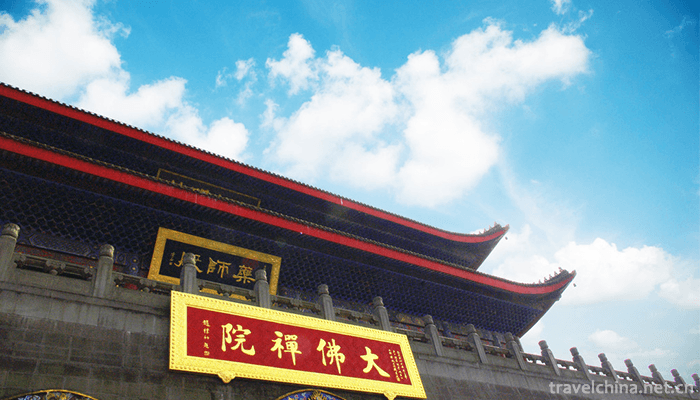
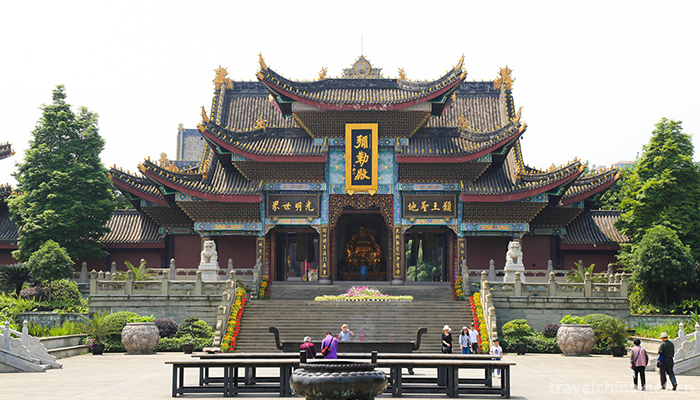
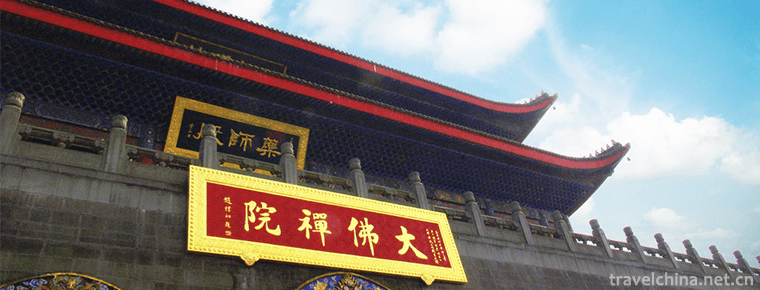
Buddhist Cultural Tourist Area of Great Buddha and Zen Temple
-
About Us
If you are interested in Chinese culture, Beautiful Scenery and Delicious Food, Welcome to China.
Views: 486 Time 2018-09-28 -
Dongpos braised pork
Dongpo meat, also known as roll meat and Dongpo stewed pork, is a famous traditional dish in Meishan and Jiangnan area
Views: 227 Time 2018-10-27 -
Sanhe ancient town Scenic Area
Sanhe Ancient Town Scenic Area is located in Feixi County, Hefei City, on the shore of Chaohu Lake, adjacent to Lujiang County and Shucheng County
Views: 199 Time 2018-12-08 -
Libo Zhangjiang Scenic Spot
Libo Zhangjiang Scenic Spot is located in Libo County, Buyi and Miao Autonomous Prefecture, Guizhou Province, with a total area of 118.8 square kilometers. It is composed of big and small Qikong sceni
Views: 205 Time 2018-12-12 -
Woodbugle
Forest chant is a traditional folk song in Northeast China. It is a kind of song sung by woodcutters who are engaged in carrying wood in the forest. As the saying goes, "trumpet". At present
Views: 105 Time 2019-06-12 -
Traditional Cuisine Skills of Shanghai Bengang Cuisine
Benbang cuisine is a nickname for Shanghai cuisine and an important school of Han traditional catering culture in Jiangnan area. The so-called Ben Gang is local. It is characterized by thick red sauce
Views: 155 Time 2019-06-13 -
suzhou pingtan
Suzhou Pingtan is the general name of Suzhou Pingtan and Suzhou Pingtan Ci. It is a traditional form of opera and opera that uses Wu dialect to speak and perform freely. It came into being and became
Views: 90 Time 2019-06-17 -
Wu Anpings tune
Wu'anping DiaoLaozi originated in the late Ming and early Qing Dynasty. Wu'anping DiaoLaozi and Wu'anluozi are two unique local operas in Wu'an City, Hebei Province. They are often performed together.
Views: 325 Time 2019-06-30 -
Youyang Folk Songs
Youyang folk song is a rich and colorful folk culture created and accumulated by the Tujia, Miao and Han people in Youyang Tujia and Miao Autonomous County of Chongqing in the long practice of product
Views: 146 Time 2019-07-14 -
Suining famous specialty
Suining City has Shehong Medina beef, Daying white lemon, Chuanshan bean curd peel, Anju golden pear, zhuotang well salt, da'anshu beef, Chicheng lake fish mat, shehongyexiang pig, Anju 524 sweet potato, Pengxi green pepper, Pengxi Xiantao, qiaoguanying
Views: 338 Time 2020-12-16 -
Leshan post and Telecommunications
By the end of 2018, there were 253 post offices in Leshan City, with an average of one postal service network for every 50.29 square kilometers and 12900 people. There are 79 postal routes in the city, with a total length of 3490 km. There are 158 urban delivery routes
Views: 354 Time 2020-12-17
